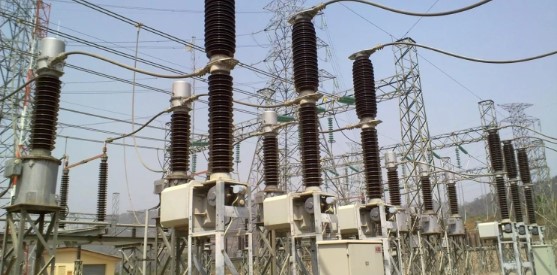


The Nigerian government’s move to revise electricity tariffs is set to deliver a 52% cut in monthly subsidy expenses.
The reduction will see the current N261.2 billion figure fall to around N125.94 billion, unlocking a significant N135.26 billion in monthly fiscal savings.
The heart of Nigeria’s political power, Abuja, harbors the most considerable congregation of premium electricity consumers classified under Band A who will invariably bear the brunt of this cost recalibration.
Here is a breakdown of the impact of the new tariff hike on the subsidy costs for each Power Distribution Company (DisCo) as presented by the Nigerian Electricity Regulatory Commission (NERC):
Abuja (AEDC)
Number of Band A Feeders: 107
The new tariff range is N33.95 to N225.00, and the monthly subsidy cost is N18.95 billion, down from N38.01 billion previously.Benin (BEDC)
Number of Band A Feeders: 44
Customers in this area will see a new tariff range of N41.20 to N225.00. The new subsidy cost is N11.01 billion, a decrease from the previous N21.69 billion.Eko (EKEDC)
Number of Band A Feeders: 21
The new tariff is set at N32.44 to N225.00, with subsidy costs now at N13.74 billion compared to N32.28 billion.Enugu (EEDC)
Number of Band A Feeders: 44
For Enugu, the tariff range is N36.20 to N225.00, with a new subsidy figure of N10.31 billion, down from N19.59 billion.Ibadan (IBEDC)
Number of Band A Feeders: 30
The tariff range for Ibadan is N36.26 to N225.00, and the subsidy cost has been reduced to N11.16 billion from N31.31 billion.Ikeja (IEDC)
Number of Band A Feeders: 45
Customers will be charged within the new range of N31.24 to N225.00, and the subsidy cost has been lowered to N17.03 billion from the previous N38.37 billion.
Jos (JEDC)
Number of Band A Feeders: 48
The new tariff range for Jos is N39.90 to N225.00, and the subsidy cost is now N9.19 billion compared to N15.51 billion before.Kaduna (KAEDC)
Number of Band A Feeders: 25
The tariff has been revised to range from N35.41 to N225.00, and the subsidy cost is now at N9.76 billion, down from N18.24 billion.Kano (KEDC):
Number of Band A Feeders: 43
For Kano, the new tariff range is N31.88 to N225.00, with a reduced subsidy cost of N7.79 billion from N18.48 billion.
Port Harcourt (PHEDC)
Number of Band A Feeders: 43
The tariff range here is now N39.44 to N225.00, and the new subsidy cost is N10.13 billion, compared to N18.89 billion previously.Yola (YEDC)
Number of Band A Feeders: 15
The new tariff range for Yola is N30.01 to N225.00, with the subsidy cost now at N6.87 billion, down from N8.83 billion.
These adjustments represent a significant shift in the government’s spending on electricity subsidies across the nation, aiming to align the cost of power more closely with the actual supply and demand dynamics in the market.The reduction in subsidy spending, particularly when economic pressures are mounting due to other macroeconomic factors, could have far-reaching implications for both consumers and the power sector.
Key Assumptions Driving Hike
The revision of electricity tariffs in Nigeria is a complex process that takes into account several key assumptions. These factors are not only crucial but also intricate, forming the backbone of the cost-reflective pricing model adopted for electricity tariffs.Exchange Rate: The tariff calculation considers the exchange rate between the Naira and the US dollar. A higher exchange rate means the cost of importing any dollar-denominated components or services for electricity generation and distribution becomes more expensive, contributing to higher operational costs that may be passed on to consumers.
Nigerian Inflation Rate: The domestic inflation rate directly affects the cost of goods and services within the country, including operational and capital expenditures for the DisCos. The higher the inflation, the more expensive the inputs for power generation become, necessitating a tariff hike to cover these increased costs.
US Inflation Rate: [/b]This is likely factored in because specific inputs for power generation or parts of the operational expenses may be pegged to US inflation rates, mainly if they involve American suppliers or are dollar-denominated expenses.
[b]Available Generation Capacity: [/b]The available capacity that power generating companies (gencos) can take off from the national grid impacts their ability to supply electricity.
[b]Higher available capacity could potentially lower the cost per unit of electricity, but this also depends on the demand and the efficiency of the distribution network.Wholesale Gas to Power Prices: The benchmark gas-to-power price is crucial since gas is a major input for thermal power plants in Nigeria. An increase in the price of gas would lead to increased costs of electricity generation.
Contractual agreements for the supply and transportation of gas are also a determinant. If the contracts stipulate prices that are above the domestic gas obligation supply rates, this could raise operational costs.
The benchmark gas transportation tariff adds to the overall cost of getting the gas to the power plants. Any increase in this tariff will affect the final cost of electricity generation.
All these factors combine to determine the cost-recovery tariff that Discos needs to charge to maintain its operations and potentially invest in infrastructure and improvements.
Electricity Customer Categories in Nigeria
Electricity customers are divided into different tariff classes within various service bands determined by their level of electricity consumption and the type of connections they have. The service bands range from Lifeline to E, with Lifeline being the category for the most economically vulnerable consumers who use a very small amount of electricity.More Insights
Nigerians are set to face heightened economic pressures due to a significant increase in electricity tariffs across the country. The new tariff adjustments imposed by the Nigerian Electricity Regulatory Commission (NERC) will see an average of over 200% increase, which signals the termination of energy subsidies for Band A.A review of the new tariff regime shows that households and businesses should prepare for substantial increases in their energy costs. The hike affects all Band A customers, who receive at least 20 hours of electricity daily, witnessing some of the most substantial increases.
The tariff hike has been met with significant pushback from consumer advocacy groups and the general public. Critics argue that the increase is unjustified, given the persistent issues with power supply and quality across the country.
The policy intends to align tariffs with the quality of service provided, and the latest order from the NERC aims to ensure that DisCos fully recover operational costs and earn a reasonable return on investment. This adjustment is part of a broader strategy to improve the reliability and quality of electricity supply, which hinges on DisCos’ capital expenditures and performance improvement plans. The tariff restructuring is also seen as a move to mitigate the cost implications of floating naira and inflationary pressures.
SPONSORED LINKS
[TRENDING SONG!!] Romani D-Fans – Bestie (Prod By Krizbeatz)
[TRENDING MIXTAPE!!] DJ Baddo – Bestie Unlimited Mix
[TRENDING SONG!!] TYSG Ft Bad Mz X Kendi Rozzi – Iyariya
INSTALL 9JAFLAVER MUSIC APP, STREAM, DOWNLOAD, AND PLAY MUSIC OFFLINE
CHECK OUT FUNNY PICTURE AND MEME HERE (CLICK HERE)
Chissom Anthony – Glory To God In The Highest [See Trending Gospel Song]
© 2014-2023 9jaflaver. All Rights Reserved.
About us | DMCA | Privacy Policy | Contact us
| Advertise| Request For Music | Terms Of Service
9jaflaver is not responsible for the content of external sites.